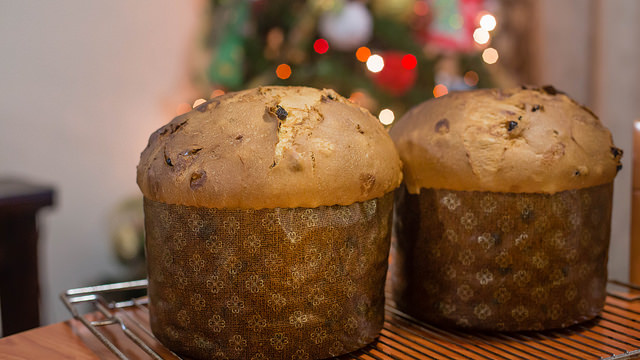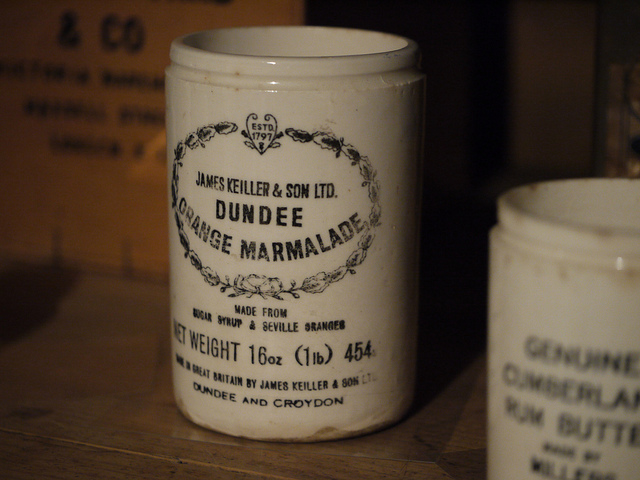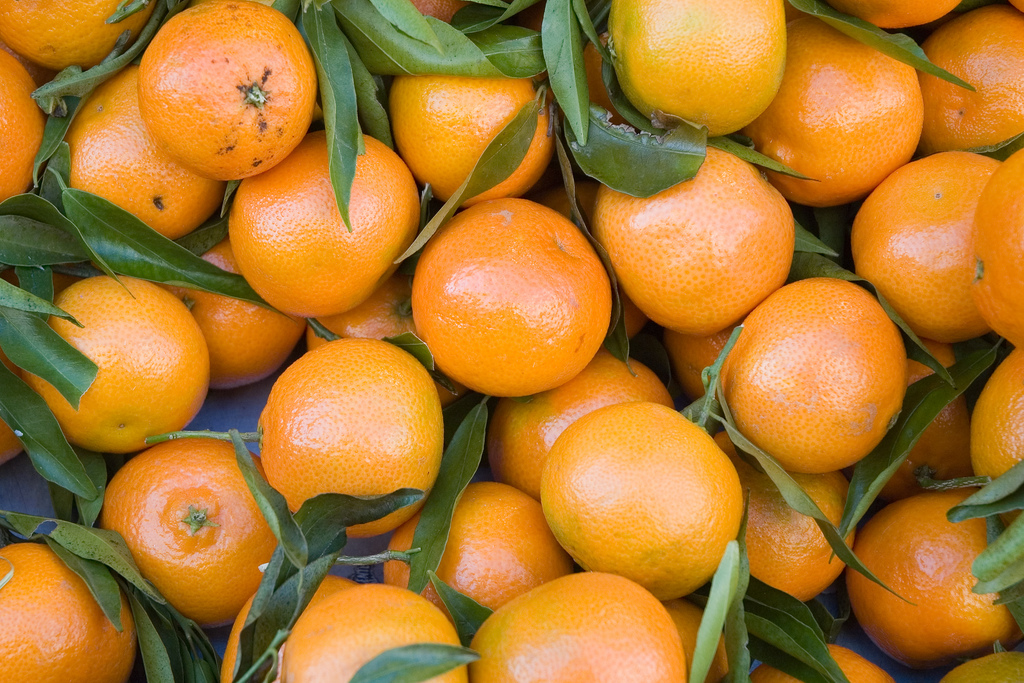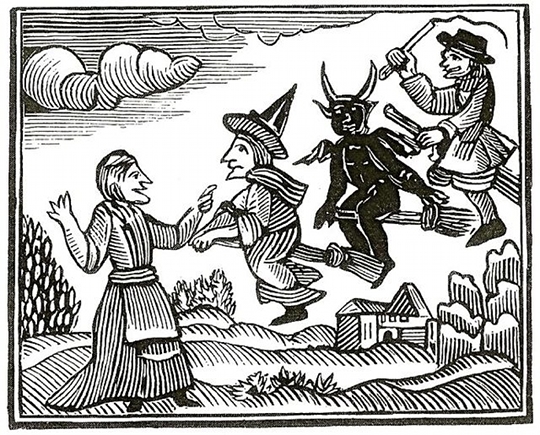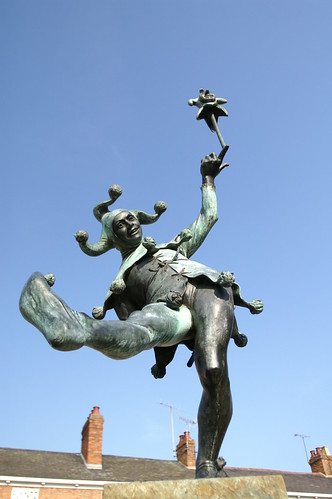Happy Fat Tuesday! This is your last chance before Lent to partake in revelry and debauchery — or if you don’t practice Lent, just another excuse to revel and debauch.
Today’s post is more festive than depraved as we delve into nine parade words, from the disapproving — and noisy — French, to secret New Orleans societies, to centuries-old folk traditions in the U.S.
callithump
“You probably don’t know what callithump is, but you will find out if you undertake to hoe sod-ground potatoes in July. It has something to do with brazen trumpets and violence.”
Albert Bigelow Paine, Dwellers in Arcady: The Story of an Abandoned Farm, 1919
A callithump is a parade of the “somewhat riotous” vein, accompanied by “the blowing of tin horns, and other discordant noises.”
The Online Etymology Dictionary says the word originated around 1836 as a U.S. colloquialism and “fanciful construction.” Callithump or callithumpian probably plays off Gallithumpians, a “Dorset and Devon word” from the 1790s for “a society of radical social reformers, and also in reference to ‘noisy disturbers of elections and meetings.’”
The American English sense commonly refers to “’a band of discordant instruments’ or bangers on pots and pans, especially to ‘serenade’ a newlywed couple to show disapproval of one or the other or the match.”
cavalcade
“‘But does your foolish old hen suppose that this entire cavalcade, which is bound on an important adventure, is going to stand still while she lays her egg?’ enquired the Tin Woodman, earnestly.”
Frank Baum, Ozma of Oz, 1907
A cavalcade is a procession of people on horseback, as well as “a formal, pompous march of horsemen by way of parade.” The word is an old one, from the 1590s, and comes from the Italian cavalcare, “to ride on horseback.”
In the early 20th century, –cade came to be known as a suffix meaning “procession” or “display, and gave rise to words such as motorcade, autocade, and aquacade.
charivari
“The popping of revolvers, the clanging of cow bells, the clash of tin boilers–all that medley of discord which lends volume to the horror known as a charivari–tore to shreds the harmony of the night.”
William MacLeod Raine, A Man Four-Square, 1909
A charivari is pretty much just like a callithump, that is “a mock serenade of discordant noises, made with kettles, tin horns, etc., designed to annoy and insult” newlywed couples busybody neighbors don’t approve of, such as “an older widower and much younger woman, or the too early remarriage by a widow or widower.”
Charivari, which literally means “rough music,” is older than callithump by about a hundred years. While French in origin, charivari ultimately comes from the Greek karebaria, meaning “headache.” An alteration is shivaree, which originated in the U.S. in 1843.
fanfaron
“Calling him an old blower and bloat, a gas-bag and fanfaron, a Gascon and a carajo, alma miserabile, and a pudding-head…and a darned old hoffmagander…the divil’s blissing an him!”
“Chronicles of Secessia,” Continental Monthly, Vol. I. February, 1862, No. II.
A fanfaron is a bully or boaster, as well as a noisy or ostentatious parade. The Online Etymology Dictionary says fanfaron came from French into English in the 1670s, and like the word fanfare, comes from the French fanfarer, “blow a fanfare,” which may be borrowed from the Arabic farfar, “chatter.”
junkanoo
“At a time when Junkanoo is fighting for its survival, we believe that to limit the exposure of Junkanoo to potential spectators, and indeed the world, in this manner is counter-productive.”
Rashad Rolle, “Junkanoo Cut to a Single Lap,” Tribune242, December 31, 2014
A junkanoo is a parade commonly held in the Bahamas on Boxing Day and New Year’s Day.
The word and practice might be based on John Canoe, which, says the Oxford English Dictionary (OED), stems from the West Indies and refers to “the chief dancer, or one of several dancers, in a Christmas celebration”; any masks or structures worn by the dancer; or the celebration itself.
John Canoe first appears in English in 1774: “The masquerader..dances at every door, bellowing out John Connú!”
krewe
“Each parade is run by a krewe, a volunteer group whose membership dues make the parade happen.”
Kenny Klein, “Krewe Of Muses: Mardi Gras Parades Explained!” The Huffington Post, May 3, 2015
A krewe is “any of several groups with hereditary membership whose members organize and participate as costumed paraders in the annual Mardi Gras carnival.”
The word, an alternation of crew, comes from the Mistick Krewe of Comus, the first of such groups, which was established in 1857. (Mistick is an alteration of mystic while Comus is the Greek god of festivity.) Other such “krewes” formed shortly afterwards, including the the Krewe of Rex, the Knights of Momus, and the Krewe of Proteus.
The first known use of krewe to refer to this type of group in general was in 1936, says Merriam-Webster.
Mummers Parade
“It is a very methodical madness, however, for the chief participants in this great annual festival Philadelphia — which is known as the New Year Mummers’ Parade — begin their preparations for the following year as soon as the sun sets on scene of gaiety.”
H.R. Jones, “A New Year Parade,” The Wide World Magazine, January 1904
The Mummers Parade is a New Year’s Day tradition specific to Philadelphia and believed to be “the nation’s oldest folk festival,” says NBC. The practice blends immigrant traditions from Scandinavia, England, Wales, and Germany, and after the Civil War, African American residents who arrived in Philadelphia “added the signature strut along with ‘Oh! Dem Golden Slippers,’ the parade’s theme song.”
The Mummers Parade is related to the mummers’ play, an English Christmas tradition. The mummers’ play, says the OED, is a traditional play performed by mummers during major holidays. While the practice is from the 18th century, the term “appears to be the invention of 19th-cent. folklorists.”
parade of horribles
“That expression, ‘parade of horribles,’ has special resonance in the legal world, typically as a put-down used by one side in a dispute to dismiss opponents’ concerns about a ruling’s negative effects.”
Ben Zimmer, “Where did the Supreme Court get its ‘parade of horribles’?” The Boston Globe, July 1, 2012
Like the Mummers Parade, the parade of horribles is an American folk tradition, this one originating in New England in the 19th century and involving a procession of people “wearing comic and grotesque costumes” on the Fourth of July.
According to Ben Zimmer, the term parade of horribles is a play on “the ancients and honorables,” a colloquial name for “the country’s oldest military organization, the Ancient and Honorable Artillery Company of Massachusetts, chartered in 1638.” The ancients and honorables would “parade around in uniform,” an ostentatious display that was “ripe for satire.”
Parade of horribles is also a rhetorical device in which a speaker argues “against taking a certain course of action by listing a number of extremely undesirable events which will ostensibly result from the action.”
[Photo via Flickr: “Krewe of Barkus and Meoux Pet Parade, Shreveport, LA,” CC BY 2.0 by Shreveport-Bossier Convention and Tourist Bureau]



